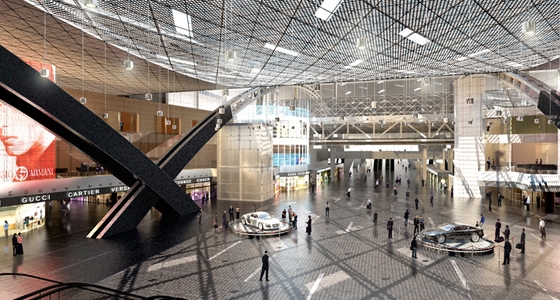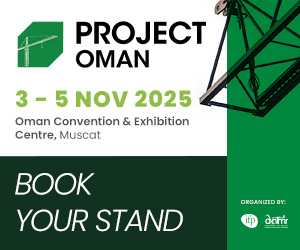Momentum is building across Qatar’s rail, aviation and port projects, on the back of rising investment, paving the way for a broadening of the state’s economic base.
Higher investment in Qatar’s transport network will support efforts to diversify the economy, according to a report produced by the Centre for Economics and Business Research (CEBR) on behalf of the Institute of Chartered Accountants in England and Wales (ICAEW). The report, published in mid-September and entitled “Economic Insight: Middle East Q3 2014”, noted that stronger transport infrastructure would also reinforce GCC integration.
Regional potential
In its findings, the CEBR said investment in Qatar’s rail and aviation infrastructure would begin to have a marked impact over the next few years, with the logistics sector’s contribution to GDP expected to reach 8.4% in 2018, up from 6.5% in 2013, according to the Ministry of Development, Planning and Statistics.
An improved performance on this scale would make Qatar better placed to step up trade regionally and beyond in the years to come, said ICAEW’s regional director for the Middle East, Africa and South Asia, Michael Armstrong.
“While Qatar currently has the lowest level of intra-regional trade of all the GCC nations, exporting only 1% of total goods to the Middle East in 2013, this situation is expected to change significantly when the country’s rail and airport projects come on-line. This diversification will help foster internal commerce and investments necessary for sustainable long-term growth,” he said.
The report noted that high levels of investment in key sectors of the economy, including transport, should put Qatar’s economy on course to post growth of 6.3% in 2014, edging towards 7% in the following two years, well above the predicted regional average.
QNB Group was even more bullish in its economic update, released at end-September. The bank said it expected GDP to expand at between 6.8% and 7.8% up to 2016. Much of the growth, the group said, would be fuelled by investment in the transport, construction and services sectors.
Key part for port
Qatar’s New Port Project (NPP), which is under construction to the south of the capital, Doha, will be a cornerstone of the infrastructure development. The first phase of the $7.4bn facility is scheduled to begin operations in 2016, with initial capacity to handle 2m containers and 2m tons of general cargo annually. Once fully completed, the port will be able to handle 6m containers and manage 2.7m tons of general and grain cargo combined each year.
“The port is quite possibly the most critical project for the country,” Nabeel Mohammed Al Buenain, NPP’s executive-director, told OBG. “The amount of material needed for the country cannot come in via road and air. The country has to have the new port operational on time to bring in the materials required for the infrastructure boom that is under way.”
Construction work on the NPP’s facilities will also include a naval base for the Qatar Emiri Naval forces and an access channel for Qatar Economic Zone 3 (QEZ3), one of three industrial zones. The project’s planners hope QEZ3 can attract additional industrial development in the area by providing businesses with simpler regulations and infrastructure connections. The area is set to focus on building up value-added industries like downstream metals, petrochemicals and maritime industries.
Port investments are significant, but progress could be instrumental to future economic plans. Export-oriented ports delivering LNG and other hydrocarbons around the world have been the dynamo driving the Qatari economy forward. Continuing to modernize port infrastructure could support those revenue streams and keep trading costs low for virtually every sector of the economy.
Tapping investors
A government stipulation that at least 50% of the work carried out on the port project must be awarded to domestic contractors will ensure that much of the investment remains within the local economy. However, Qatar has also begun highlighting the opportunities emerging in its transport projects to overseas firms.
In September, Qatar’s minister of transport, Jassim Saif Ahmed Al Sulaiti, told participants at an international infrastructure conference in South Korea that the country would be setting aside $140bn for transport and other infrastructure development projects over the coming five years. Listing several of the projects, including the NPP, the metro and rail network and the planned expansion of Hamad International Airport, the minister said Qatar had plenty to offer overseas investors seeking opportunities in the region.
Sheikh Ali bin Jassim bin Mohammed Al Thani, the chairman and managing director of transport company Milaha, believes the sector will see increased activity over the course of the year as imports rise, resulting, in part, from new infrastructure developments.
“We saw relatively strong growth of 10% plus in import volumes in the second quarter of 2014 and we are optimistic that this growth trajectory can be maintained the rest of the year,” he told OBG. “We expect volumes to continue to grow in the second half of 2014, as the pipeline of projects is starting to move into execution stage.”
Oxford Business Group
5 November


















































































